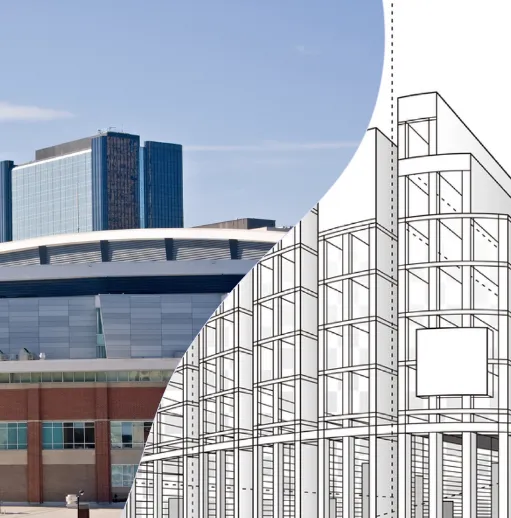
Workplace technology is on an exponential curve. It wasn’t long ago we used fax machines and interoffice mail to work — now, even email seems out-of-date. The impact of technology in the workplace is substantial, and it’s changing everything from how we work to what tools we use to do our jobs.

The breadth of workplace technologies available today takes two forms: workplace-facing and workplace-supporting. Technologies like messaging apps and room booking software are workplace-facing because they’re the tools employees use to do work. Occupancy sensors and Integrated Workplace Management Systems (IWMS) represent workplace-supporting tech because they govern the workplace construct, both physical and digital. Together, they represent the technologically powered environment that is the modern workplace.
Why do we need all this tech?
A salesperson or accountant might have the same job description today that they did decades ago, but what that work entails is so much more. The sophisticated evolution of work comes on the heels of workplace technology growth.
Improved interpersonal communication
How has modern technology changed the workplace? The simplest example to look at is interpersonal communication. Over time we’ve sped up the rate at which we communicate and the scope of that communication. This is evident even as recently as the shift from email to messaging apps.
Jim needs to ask Sally a question about a project. He could send an email since Sally is off-site today — or he can instant message her through Slack. Through Slack, she gets the notification immediately and can reply in seconds. Jim’s question sits in the #project channel instead of buried in an inbox, and there’s a historical record of their conversation instead of a growing email chain. Jim gets his answer fast, and the two stay on the same page.

Messaging apps integrate with various other cloud-based apps, which always puts communication front and center. Employees can leave notes in a collaborative file or send a thumbs-up emoji to sign off on a memo. Thanks to modern interpersonal communication tools, employees communicate clearly and more often, with better results.
Speedier workflows
Quicker, better communication has spilled over into other areas of workplace transformation. One of the most notable positive effects of technology in the workplace is quicker workflows. It’s not only communication technology behind this agility — it also involves workplace planning and coordination software.
IWMS and Computer-Aided Facilities Management (CAFM) platforms quicken workplace management. It no longer takes days or weeks to repurpose a workspace or change the dynamic of an office. Facility managers can adapt the workplace in minutes to shave hours or days off project timelines and tasks. Moreover, there are fewer barriers and overlaps between employees.

Bob and John don’t need to wait for Michelle and Patricia to finish using a meeting space — they can find (or make) an alternative space in seconds. Steve can look at his calendar for the day, pop online, and reserve a suitable workspace.
Worktech simplifies the complexities of an agile environment so that employees can do more faster. Work gets done quicker and more efficiently.
Broad asset accessibility
The business cloud is arguably the most influential workplace technology of the last two decades. Think about what the cloud offers; broad access to any digital assets, anytime, anywhere. This level of accessibility is so ingrained in what we do we often take it for granted.
Mike saves his PowerPoint presentation at his desk on the fourth floor, then pulls it up from the cloud for his meeting on the ninth floor a few minutes later. Then, Lily accesses the entire folder of digital project assets from her home office to make last-minute adjustments before the big rollout.
As much as the business cloud has changed the traditional workplace, it’s also the biggest catalyst for antiquating it. This level of accessibility allows people to work from anywhere — which is extremely common today. In fact, this tech is still growing more powerful today through innovations in edge computing and decentralized server networks.

More productive environments
Finally, we need to ask, how does technology affect productivity? If it’s not evident already, technology has been the most significant stimulus for improving employee productivity and efficiency. Try to do your job without a computer or email.
Without messaging apps or cloud storage. Without the ability to reserve a workspace or contribute to a shared document. It’s likely impossible to work without technology in today’s climate. Even if you could manage it, you’d be light years behind.
Technology touches every aspect of work — how, where, and even when we accomplish it. The result of ever-increasing advancements in technological tools is evident in everything from how we communicate to the scope of the work we do daily.
Above all, today’s profound flexibility in work habits shows the importance of technology. Thanks to workplace technologies, we’re ever-moving, constantly communicating, and consistently accomplishing, no matter where or what we’re doing.
Learn how Eptura’s software can help your business thrive. Check out our plans.


